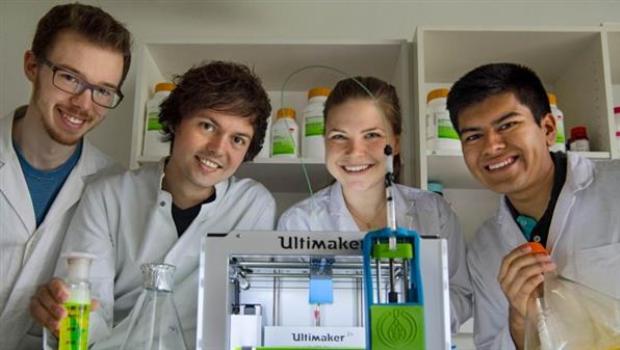You must have heard about bio-ink that is used for 3D printing endeavors. Some students from the University of Munich have used Ultimaker 2+ 3D printer and have made bioINK. Yes, you are guessing it right; it is the bio-ink that will be used to make 3d printed products.
It is really exciting that in the scientific niche, the bio-ink has been a subject of constant interest. With the help of special 3d printers, the scientists are able to create tissues from real human cells. If this persists, soon 3d printers will be able to create 3d printed human organs for transplant. But the main problem is that printing human order requires a lot of extra stuff and efforts. The cells that will be created don’t have the properties of being printer friendly. That is why scientists prefer and use bio-ink which will help in the making of the cells.
A gathering of students from Germany’s Technical University of Munich has built up its own particular one-of-a-kind bio-ink for 3D bioprinting, entering their examination into the iGEM challenge, a yearly challenge for scientists, organic chemists, and bioengineers. The understudies’ bio-ink contains biotin, normally known as vitamin B7, and also streptavidin, a protein with a high proclivity for biotin that works like a paste. Since the bio-ink contains biotin, the group chose to call it “biotINK.”
The scientists trust that their new 3D bioprinting ink dispenses with a portion of the issues connected with other bioprinting systems, which normally require transitory frameworks to bolster the natural structures. By utilizing biotin and streptavidin, the specialists’ biotINK capacities as a sort of “atomic superglue,” restricting the biotin to the receptors and permitting researchers to exactly 3D print cells while securing them the position. This much quicker bioprinting strategy empowers the arrangement of “three-dimensional intercellular contacts and physiological microenvironments.”
“These things cross-connect with each other on the grounds that streptavidin has restricting locales for biotin, and is equipped for restricting biotin to our receptor,” said colleague Luisa Krumwiede. “They ought to then polymerize and frame a 3D structure.”
Source: 3ders.org
